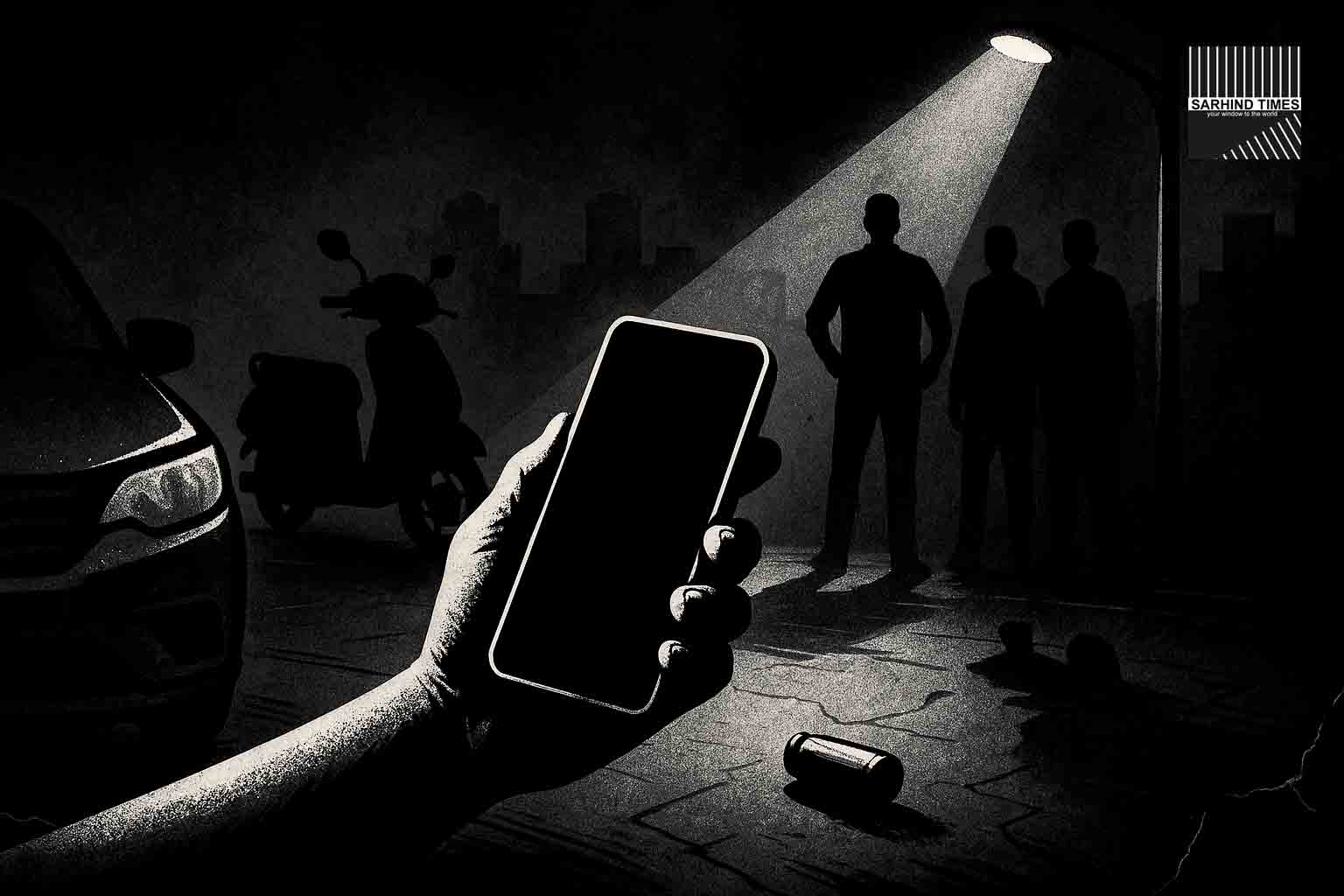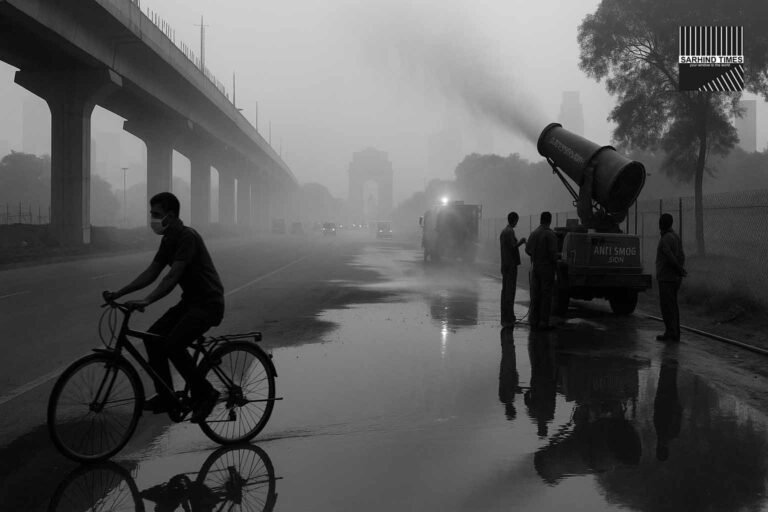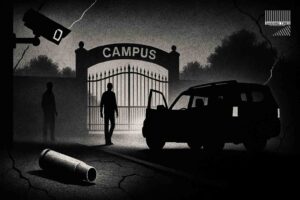Gurugram, Sept 25, 2025 — In a troubling episode of road rage, Gurugram police have arrested three persons for allegedly assaulting a commuter and snatching his mobile phone after he honked amid a traffic jam below the MG Road Metro station. The incident, which occurred on the evening of September 20, has reignited concerns about commuter safety, road discipline and the escalation of urban altercations.
The suspects have been identified as Akash Yadav (28), Keshav Kumar (21) and Gaurav Kumar (22). The victim, named as Vikash Kumar (30), works as an analyst in a multinational firm and was returning home to Faridabad when he encountered a traffic snarl near MG Road. According to the police, the altercation escalated when one of the accused confronted Vikash after he honked; the tension was defused momentarily as the accused offered a cigarette, but then summoned two associates, assaulted Vikash and fled with his phone. A scooter, a motorcycle, and the snatched handset have since been recovered. The FIR was filed at DLF Phase-II police station under relevant sections of assault and theft.
This incident underscores how minor acts like honking can spiral into violence in city settings where road tensions, anonymity and aggressive posturing prevail. As the investigation proceeds, authorities and urban planners may have to revisit protocols for traffic policing, public safety, and deterrent measures against such confrontations.
Incident Reconstruction & Police Investigation
The evening and the snarl
Around 8 pm on September 20, the stretch below the MG Road Metro station is often choked due to traffic volume, junctions and merging lanes. Vikash, in his car returning home, reportedly honked in response to congestion or perceived obstruction.
Such honking, though common, can be interpreted as aggressive or provoking. In this case, a scooter approached Vikash’s vehicle; the occupant, later identified as Akash Yadav, got into a verbal altercation, reportedly scolding Vikash for honking. The confrontation could have escalated, but Akash temporarily calmed the situation by walking him aside and offering a cigarette—a gambit perhaps to disarm suspicion.
The ambush & assault
After the standoff cooled slightly, Akash is alleged to have made a call to two associates—Keshav and Gaurav—who arrived soon in a scooter and motorcycle. Together, they reportedly surrounded Vikash, physically assaulted him, overpowered him, and snatched away his mobile phone. The group then fled the location.
The attack appears to have been coordinated, timed and with backup, suggesting prior willingness to escalate or readiness to bring reinforcement.
Aftermath, complaint and FIR
Vikash alerted the police control room, possibly via a passerby or emergency contact, and was taken to Sector 10A civil hospital for medical attention. The next day, he submitted a written complaint leading to the FIR filed on September 21 at DLF Phase-II PS under sections for assault and theft / snatching.
Recovery & arrests
Within days, police traced and recovered the snatched phone, as well as a scooter, motorcycle allegedly used by the accused, and traced their locations across the city.
- Akash Yadav, from Sirhaul in Sector 18, was arrested first; police say his family is in money-lending business.
- Keshav Kumar (21) and Gaurav Kumar (22), originally from Uttar Pradesh (Badaun and Kanpur Dehat respectively), and currently residing in Sector 18 in Gurugram, were arrested subsequently.
All three are now in custody, with the case being investigated by the local crime unit, assisted by CCTV, phone records analysis and on-ground intelligence.
Legal & Security Dimensions
Charges & legal framework
Likely charges include:
- Assault (causing hurt or danger) under relevant IPC sections
- Snatching / theft of phone
- Criminal conspiracy / abetment, given coordination
- Use of vehicles (scooter / motorcycle) in commission of crime
- Possible grievous hurt depending on injury severity
The police may also invoke local motor vehicle / traffic laws if offenses (reckless driving, unauthorized stops) are identified.
Challenges in prosecution
- Identification & witness reliability: Commuters in the snarl or passersby may be nervous about testifying.
- CCTV clarity: Cameras around MG Road are numerous, but angles, lighting, obstructions may hamper visual identification.
- Mobile / phone forensic: The snatched phone’s usage data, last location, call logs will matter.
- Coordination across jurisdictions: The accused are from UP; tracing their origins, verifying backgrounds, and coordinating with police there may take time.
- Vehicle tracking: Matching vehicle registration or ownership data, especially if plates are altered, will be key.
Role of deterrence & public policing
The case is a test for deterrent policing. Road events are public, and if perpetrators act boldly, it suggests a perception of impunity. Visible arrests, speedy trials, and public communication are essential to dissuade similar incidents.
Urban security forces may need to increase presence in known choke points, deploy patrol units, use CCTV monitoring, and issue advisories or emergency response points for commuters.
Broader Context: Road Rage, Urban Stress & Safety
Road rage as social phenomenon
Incidents like this are not isolated: when drivers feel cramped, impatient, delayed, or insulted, small triggers (a honk, a glance, a hand gesture) can escalate. Urban density, traffic pressure, anonymity, and low accountability magnify these risks.
Commuter vulnerability
Commuters in urban areas often feel at risk—amid traffic jams, blocked roads, narrow lanes. They may be isolated, far from help, and vulnerable to groups that act aggressively.
Institutional & design responses
To reduce such incidents, cities and police could:
- Implement traffic calming measures, buffer zones, turning lanes
- Install CCTV with real-time monitoring of hotspots
- Deploy rapid response squads near choke points
- Conduct public safety awareness campaigns, discouraging confrontation
- Mandate safe reporting protocols (call 112 / police) rather than retaliation
Colleges, offices and civic bodies could also promote non-confrontational road behavior, respectful commuting, and discourage honking as a provocation tool.
#Gurugram #RoadRage #Crime #CommuterSafety























+ There are no comments
Add yours